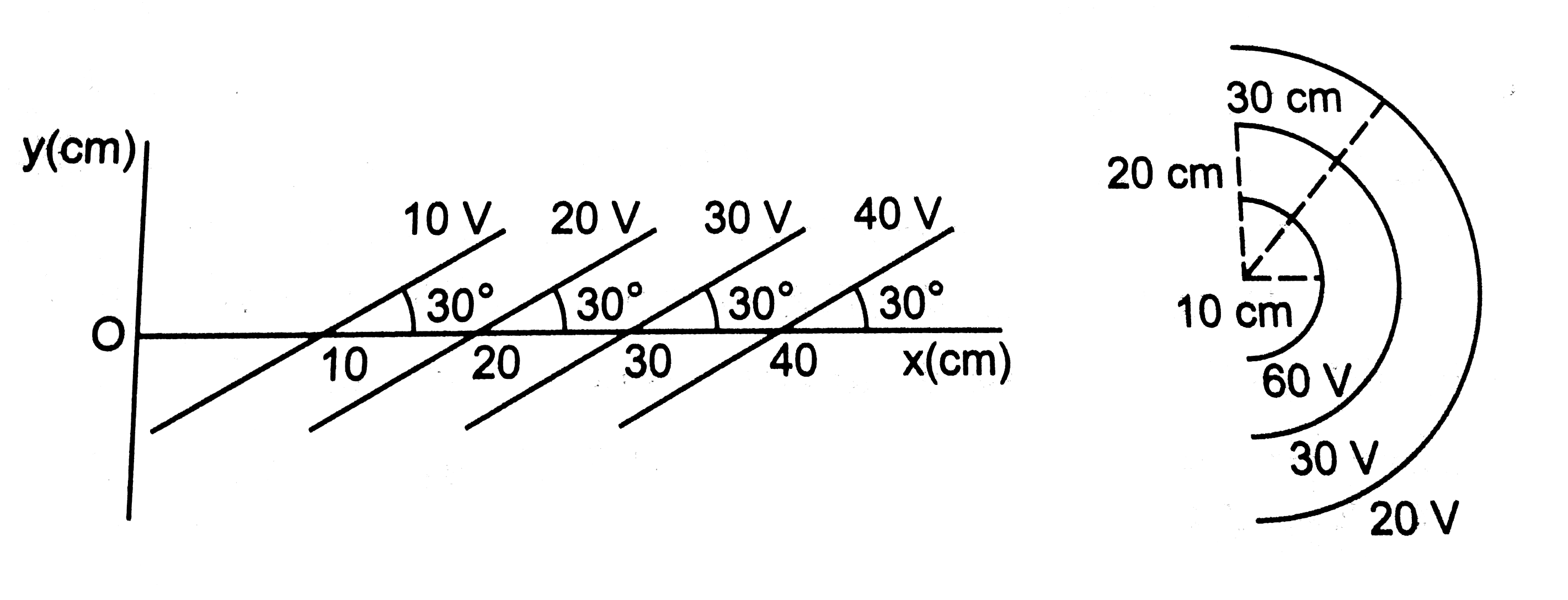A plane electromagnetic wave travels in vacuum along z- direction. What can you say about the directions of ots electric and magnetic field vectors. If the frequency of the wave is 30MHz, what is its wavelength?
The correct Answer is:A, B, C, D
To solve the problem, we will break it down into two parts:
1. Determining the directions of the electric and magnetic field vectors.
2. Calculating the wavelength of the electromagnetic wave given its frequency.
Step 1: Determine the Directions of the Electric and Magnetic Field Vectors
- Given: The electromagnetic wave travels in the z-direction.
- Understanding Electromagnetic Waves: In an electromagnetic wave, the electric field (E) and magnetic field (B) are always perpendicular to each other and also perpendicular to the direction of wave propagation.
- Direction Analysis:
- If the wave is traveling in the z-direction, the electric field vector can be oriented along the x-axis.
- Consequently, the magnetic field vector will be oriented along the y-axis.
Conclusion for Step 1:
- The electric field vector (E) is along the x-axis.
- The magnetic field vector (B) is along the y-axis.
Step 2: Calculate the Wavelength
- Given: Frequency (f) = 30 MHz = 30 × 10^6 Hz.
- Formula for Wavelength: The wavelength (λ) can be calculated using the formula:
λ=cf
where c is the speed of light in vacuum, approximately 3×108 m/s.
- Calculation:
λ=3×108 m/s30×106 Hz
λ=3×10830×106=330×108−6=110×102=10 meters
Conclusion for Step 2:
- The wavelength of the electromagnetic wave is 10 meters.
Final Answer:
1. The electric field vector is along the x-axis, and the magnetic field vector is along the y-axis.
2. The wavelength of the wave is 10 meters.
2. Calculating the wavelength of the electromagnetic wave given its frequency.
- Understanding Electromagnetic Waves: In an electromagnetic wave, the electric field (E) and magnetic field (B) are always perpendicular to each other and also perpendicular to the direction of wave propagation.
- Direction Analysis:
- If the wave is traveling in the z-direction, the electric field vector can be oriented along the x-axis.
- Consequently, the magnetic field vector will be oriented along the y-axis.
Conclusion for Step 1:
- The electric field vector (E) is along the x-axis.
- The magnetic field vector (B) is along the y-axis.
- Formula for Wavelength: The wavelength (λ) can be calculated using the formula:
λ=cf
where c is the speed of light in vacuum, approximately 3×108 m/s.
λ=3×108 m/s30×106 Hz
λ=3×10830×106=330×108−6=110×102=10 meters
- The wavelength of the electromagnetic wave is 10 meters.
1. The electric field vector is along the x-axis, and the magnetic field vector is along the y-axis.
2. The wavelength of the wave is 10 meters.
Topper's Solved these Questions
- ELECTROMAGNETIC WAVESBook:DC PANDEY ENGLISHChapter:ELECTROMAGNETIC WAVESExercise:Examples
Explore 14 Videos
- ELECTROMAGNETIC WAVESBook:DC PANDEY ENGLISHChapter:ELECTROMAGNETIC WAVESExercise:Check point 8.1
Explore 10 Videos
- ELECTROMAGNETIC WAVESBook:DC PANDEY ENGLISHChapter:ELECTROMAGNETIC WAVESExercise:Exercise More Than One Correct
Explore 4 Videos
- ELECTROMAGNETIC INDUCTIONBook:DC PANDEY ENGLISHChapter:ELECTROMAGNETIC INDUCTIONExercise:Medical entrances gallery
Explore 25 Videos
- ELECTROSTATIC POTENTIAL AND CAPACITORSBook:DC PANDEY ENGLISHChapter:ELECTROSTATIC POTENTIAL AND CAPACITORSExercise:(C) Chapter exercises
Explore 50 Videos
Similar Questions
A plane electromagnetic wave travels in vacuum along z-direction. What can you say about the direction of electric and magnetic field vectors?
View SolutionA plane electromagnetic wave travels in vacuum along y-direction. What can you say about the direction of electric and magnetic field vectors?
View Solution
Knowledge Check
A plane electromagnetic wave travels in vacuum along z-direction. If the frequency of the wave is 40 MHz then its wavelength is
A5 mB7.5 mC8.5 mD10 mAssertion : The electromagnetic wave is transverse in nature
Reason : Electromagnetic wave propagates parallel to the direction of electric and magnetic fields.AIf both assertion and reason are true and reason is the correct explanation of assertionBIf both assertion and reason are true but reason is not the correct explanation of assertionCIf assertion is true but reason is falseDIf both assertion and reason are false
A plane electroagnetic wave travels in vacum along x-direction. What can you say about the direction of electric and magnetic field vectors?
View SolutionA place electromagnetic wave is propagating along the direction (ˆi+ˆj), then which of the following is the direction of the magnetic field component.
View SolutionSome equipotential surfaces are shown in figure(29.E3) What can you say about the magnitude and the direction of the electric field?

View SolutionIn electromagnetic wave, the phase difference between electric and magnetic field vectors E and B is
View SolutionWhat are the directions of electric and magnetic field vectors relative to each other and relative to the direction of propagation of electromagnetic waves ?
View SolutionThe oscillating electric and magnetic vectors of an electromagnetic wave are oriented along
View Solution

